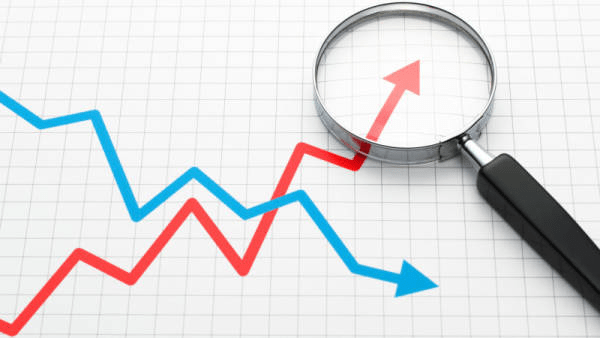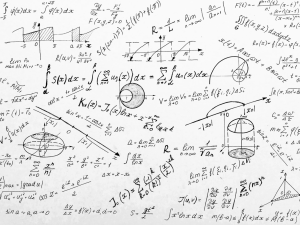Introduction
In the era of big data, organizations across various industries are harnessing the power of data science to gain valuable insights. Integration and differentiation, which are foundational concepts in calculus, serve as powerful tools for analyzing and interpreting complex datasets. By applying integration and differentiation techniques, data scientists can uncover patterns, trends, and anomalies within the data, leading to informed decision-making and efficient problem-solving.
In this guide, we will discuss how integration and differentiation are used effectively in data science. But, let’s first understand more about integration and differentiation.
Understanding Integration and Differentiation
Integration and differentiation are two major concepts of calculus that study continuous rate of change. These concepts play a great role in different fields of science such as data science.
But to understand how these concepts are used in data science, basic understanding of the integration and differentiation is required.
Integration
Integration is the process of finding the integral of a function. The integral represents the area under the curve of the function. Mathematically, the integral of a function f(x) is denoted by ∫f(x)dx where dx represents an infinitesimally small change in x and f(x) is known as integrand.
The integral can be thought of as the sum of infinitely small areas under the curve. Integrals are further categorized into major parts i.e, definite integral and indefinite integral. Definite integral is used to find an area under a curve bounded by two points.
It is represented as;
∫^b_a f(x)dx
Similarly, an indefinite integral is an integral that does not have any upper and lower limit.
For example, consider a function;
f(x) = x^2.
To find the integral of this function, we can use the power rule of integration which is equal to,
∫(x^n)dx=(1/(n+1)) * x^(n+1)
Applying this rule, we get the integral of f(x) as,
∫(x^2)dx= (1/3) * x^3 + C
where C is the constant of integration. If the function depends on two variables then we need to solve the double integral which is used to solve 2D integrands. A double derivative calculator can help you solve double integrals online.
Differentiation
Differentiation is the process of finding the derivative of a function. The derivative represents the rate of change of the function at any given point. Mathematically, the derivative of a function f(x) is denoted by d/dx(f(x)) or f'(x), where d/dx represents the derivative with respect to x.
There are different derivative rules which are used to evaluate derivatives of different functions. These rules are namely, power rule, product rule, quotient rule, chain rule and constant multiple rule.
For example, let’s differentiate the function,
f(x) = 3x^2
To find the derivative, we can use the power rule of differentiation. According to this rule, the derivative of x^n is,
d/dx(x^n)= n * x^(n-1)
Applying this rule, we get the derivative of f(x) as;
f'(x)= 6x.
Similarly, the derivative of a function can be calculated up to n times. For example, the second derivative of the above function can be calculated as:
f”(x)=6
It is calculated by differentiating the first derivative of f(x). You can also use the 2nd derivative calculator to differentiate a function twice.
Now, we’ve understood the basics about differentiation and integration, let’s find how they are effectively used in data sciences.
Role of Differentiation and Integration in Data Science
Differentiation and integration, as fundamental concepts in calculus, find numerous applications in data science. These mathematical operations play a crucial role in analyzing and extracting meaningful insights from complex datasets.
Let’s explore some key applications of differentiation and integration in data science:
1. Data Smoothing
Differentiation can be used to identify outliers or noise in a dataset. By calculating the derivative, data scientists can detect sudden changes or spikes in the data. Integration can then be applied to smooth the data by averaging or filtering out these fluctuations. This combined approach helps reveal underlying trends and patterns that might have been obscured by noisy data, improving the accuracy of analysis and modeling.

2. Trend Analysis
Differentiation enables the analysis of rates of change and trends within datasets. By calculating the derivative of a time-series dataset, data scientists can determine whether a variable is increasing, decreasing, or undergoing significant fluctuations. This information helps in understanding the underlying trends, making predictions, and identifying potential anomalies or outliers. Trend analysis using differentiation is widely employed in finance, stock market analysis, epidemiology, and climate studies.
3. Optimization
Differentiation is a powerful tool in optimization problems. By taking the derivative of a mathematical function, data scientists can determine the slope or rate of change. This information is utilized in gradient-based optimization algorithms like gradient descent, which iteratively adjust model parameters to minimize errors and maximize performance. Differentiation enables the optimization of machine learning models, finding the optimal values for hyperparameters, and improving algorithm efficiency and accuracy.
4. Signal Processing
Integration and differentiation are used in signal processing applications. Integration helps transform signals from the time domain to the frequency domain, enabling the analysis of frequency components. Differentiation is employed in techniques like edge detection, which relies on finding abrupt changes in pixel values. Signal processing techniques using integration and differentiation are applied in areas such as audio and image processing, speech recognition, and computer vision.
5. Probability and Statistics
Integration plays a key role in probability and statistics. It allows for the calculation of probabilities and cumulative distribution functions (CDFs) by integrating probability density functions (PDFs). Integration is used to compute areas under curves representing probability distributions, enabling statistical inference, hypothesis testing, and estimation of parameters. Differentiation aids in analyzing probability distributions, identifying critical points such as maxima or minima, and quantifying rates of change in probabilistic models.
6. Calculating Cumulative Metrics
Integration is used to calculate cumulative metrics such as total revenue, accumulated risk, or energy consumption. By integrating appropriate functions over specific intervals, data scientists can obtain aggregated values. Differentiation allows for the computation of rates of change of these cumulative metrics, aiding in monitoring trends, identifying critical points, and making informed decisions.
Conclusion
Integration and differentiation serve as powerful concepts in the field of data sciences. Integration helps aggregate, summarize, and extract meaningful information from datasets, while differentiation provides insights into rates of change, trends, and patterns. By effectively utilizing these concepts, data scientists can derive valuable conclusions, optimize models, analyze trends, and make informed decisions. The synergy between integration and differentiation plays a vital role in unlocking the potential of data sciences and enables us to extract valuable insights from complex data.

Discover the power of integration and differentiation in data science with our comprehensive courses. Gain the skills to analyze complex datasets, uncover hidden patterns, and make informed decisions through our specialized training programs.
Unlock the potential of your data with our professional data science services. Our team of experts utilizes integration and differentiation techniques to extract valuable insights, optimize models, and solve complex problems. Contact us today to leverage the power of data science for your organization’s success.

